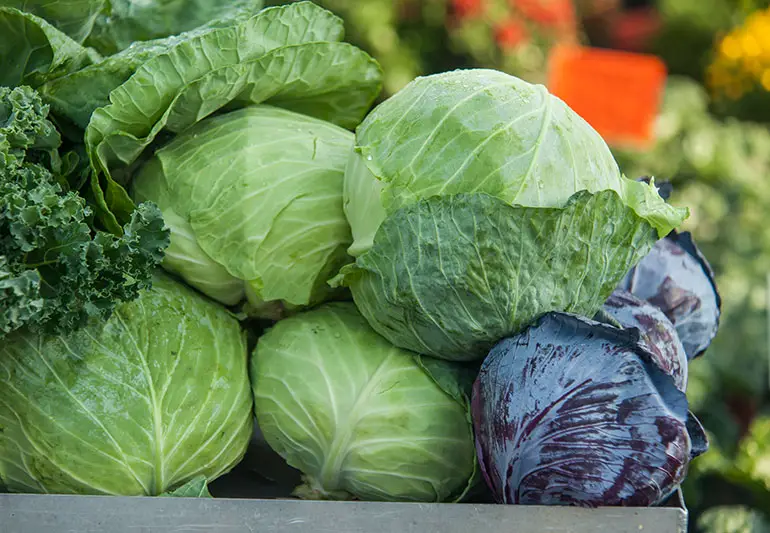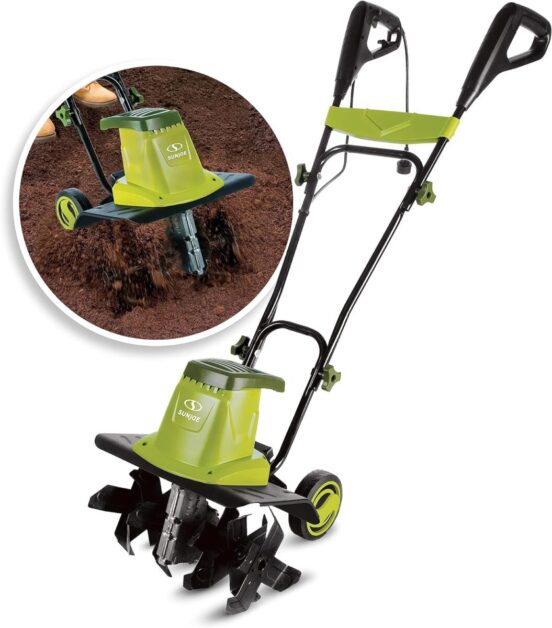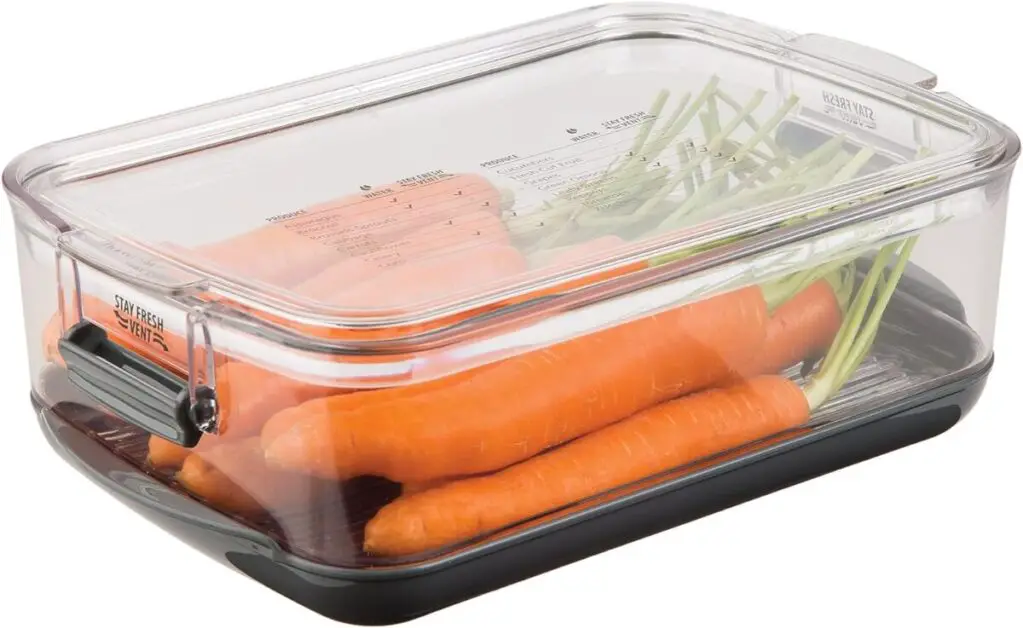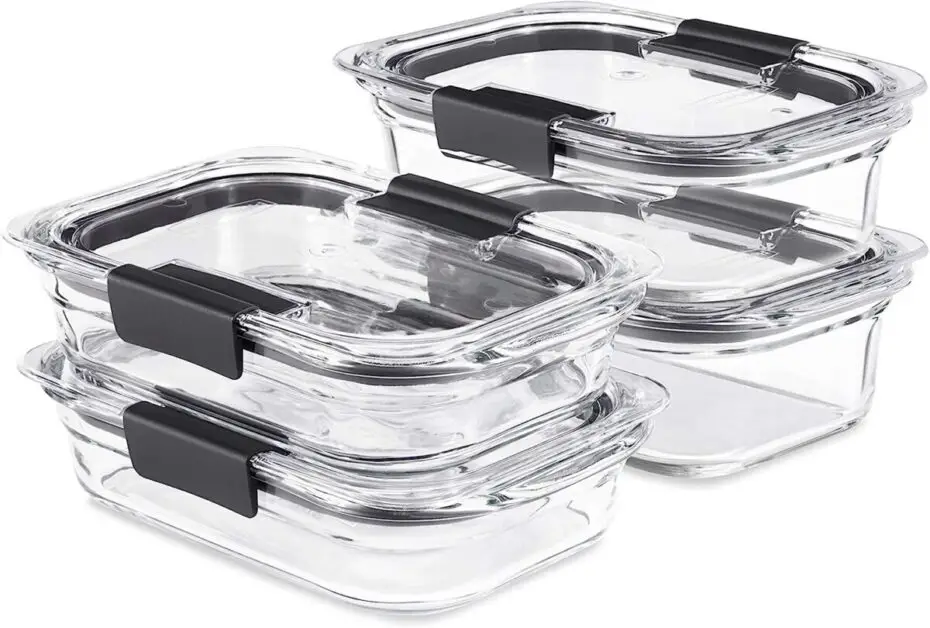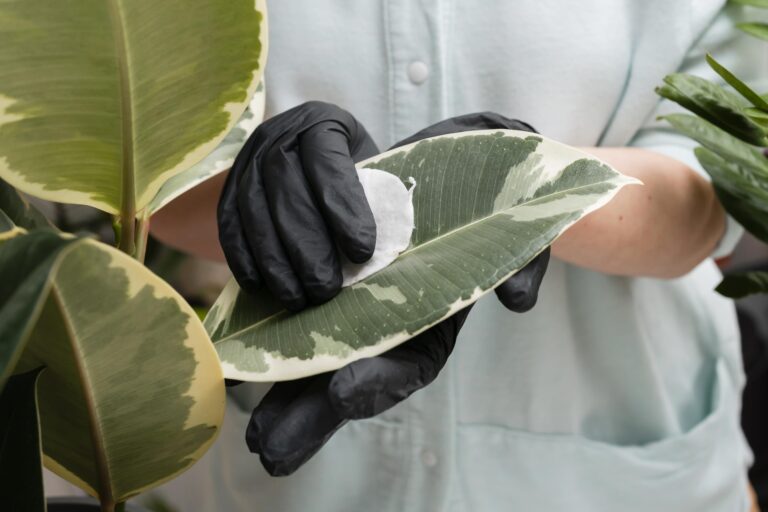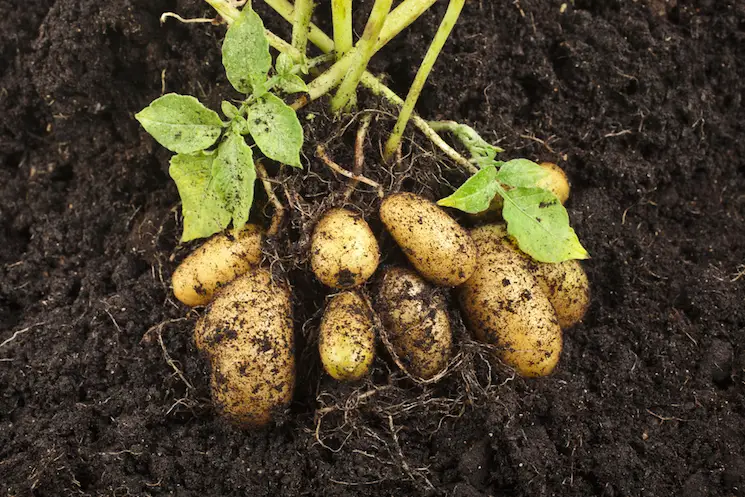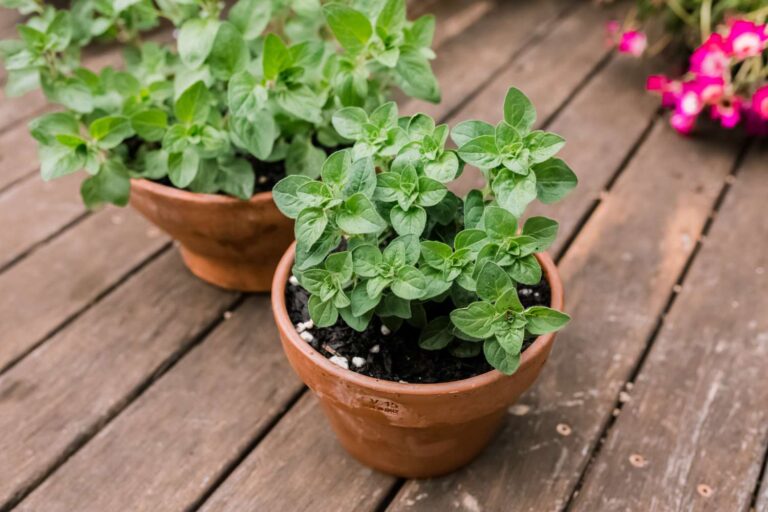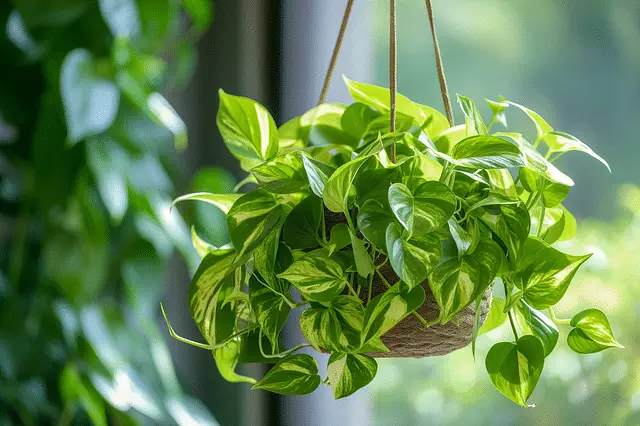Growing Cabbage: A Guide For Great Heads
“Cabbage, a staple in many American kitchens, is not only delicious but also easy to grow. Whether you’re a seasoned gardener or just starting out, this leafy vegetable is a great addition to any garden. From the humble red cabbage to the colorful savoy, these versatile plants thrive in cool weather and are a delight to grow. With proper care, such as full sun exposure, well-draining soil, and regular watering, you can enjoy fresh, homegrown cabbage all year round. Get ready to transform your garden into a bountiful oasis and enjoy the satisfaction of growing your own food with ease.”
Table of Contents
Understanding the Basics of Cabbage Cultivation
Cabbage cultivation is a fundamental aspect of any vegetable garden, and understanding the basics is essential for successful growth and a bountiful harvest. Whether you are a seasoned gardener or just starting out, knowing the key factors involved in cabbage cultivation will set you on the path to success.
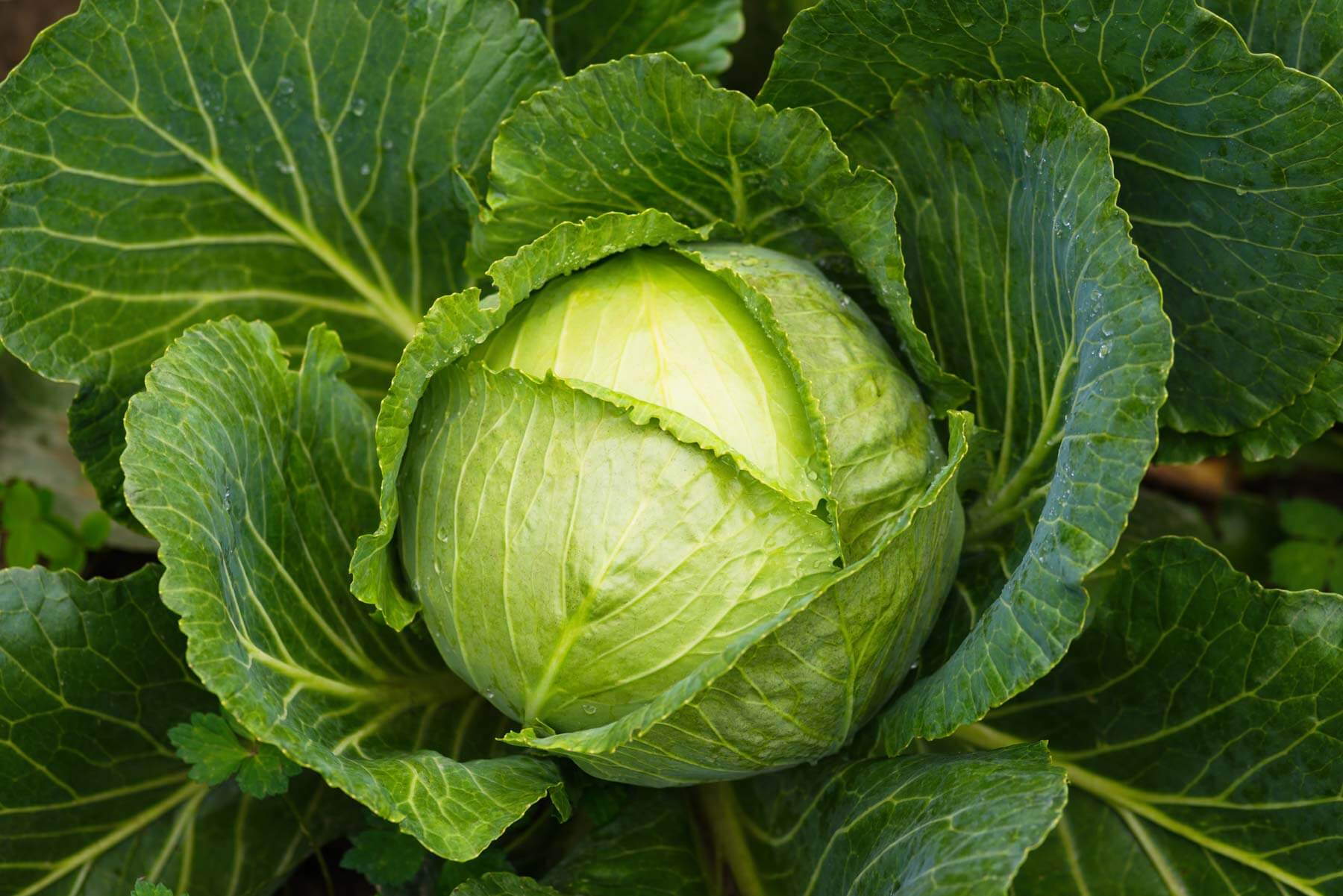
- To begin with, selecting the right cabbage variety for your garden is crucial.
- Cabbage comes in many different types, each with its own unique characteristics and requirements.
- Whether you prefer early maturing varieties or those that are more suitable for storage, consider factors such as climate, growing season, and personal taste preferences.
- By choosing the right variety, you can ensure that your cabbage plants thrive in your specific growing conditions.
Selecting the Right Cabbage Variety for Your Garden
Cabbage is a versatile and nutrient-rich vegetable that is well-suited for growing in a garden. However, with so many different cabbage varieties available, it can be challenging to select the right one for your specific gardening needs. When choosing a cabbage variety, there are several factors to consider.
- Purpose of Cultivation:
- Decide whether you intend to consume fresh cabbage or use it for sauerkraut or coleslaw.
- Different cabbage varieties have distinct characteristics that suit specific culinary purposes.
- Climate and Growing Conditions:
- Assess your local climate and growing environment.
- Some cabbage varieties thrive in cooler climates, while others tolerate heat better.
- Choose a variety that aligns with your weather conditions for optimal growth.
- Size and Maturity Rate:
- Consider the available space in your garden.
- If space is limited, opt for smaller cabbage varieties (such as mini or baby cabbages) that occupy less room.
- Alternatively, if you have ample space, explore larger cabbage varieties that can yield heads weighing several pounds.
| Variety | Advantages | Disadvantages | Characteristics |
|---|---|---|---|
| Green Cabbage | – Widely available and easy to grow. | – May have a stronger flavor compared to other varieties. | – Classic green heads. |
| – Suitable for small spaces and hot weather. | – Not as visually striking as some other colorful varieties. | – Versatile for cooking and coleslaws. | |
| Red Cabbage | – Rich in antioxidants and vibrant color. | – Takes longer to mature than green cabbage. | – Deep purple or red heads. |
| – Adds visual appeal to salads and dishes. | – Can be more challenging to grow due to longer growing time. | – Ideal for pickling and slaws. | |
| Savoy Cabbage | – Crinkled leaves provide texture and flavor. | – Outer leaves may be tougher and need removal. | – Ruffled appearance with green or purple outer leaves. |
| – Mild taste and tender texture. | – Requires more space due to leafy structure. | – Excellent for stuffing, stir-fries, and soups. | |
| Napa (Chinese) Cabbage | – Delicate, mild flavor. | – Sensitive to heat and bolting. | – Oblong-shaped heads with pale green leaves. |
| – Ideal for kimchi and stir-fries. | – Needs consistent moisture. | – Crisp and juicy texture. | |
| Conehead Cabbage | – Compact growth habit. | – Smaller heads than other varieties. | – Cone-shaped heads with tightly packed leaves. |
| – Good for limited garden space. | – Less common in stores. | – Suitable for small gardens and container planting. | |
| Siberian Cabbage | – Cold-hardy and can withstand frost. | – Smaller heads and less yield. | – Blue-green leaves with a sweet flavor. |
| – Early maturing variety. | – May not store as long as other types. | – Great for short growing seasons. | |
| January King Cabbage | – Tolerates cold weather. | – Slower growth compared to some varieties. | – Green outer leaves with purple centers. |
| – Unique flavor with hints of nuttiness. | – Requires well-drained soil. | – Excellent for winter harvests. | |
| Storage Cabbage | – Long storage life (up to several months). | – May not be as tender as fresh cabbage. | – Thick, dense heads suitable for winter storage. |
| – Ideal for preserving and fermenting. | – Takes longer to mature. | – Varieties like ‘Brunswick’ and ‘Danish Ballhead’. |
Remember to choose varieties based on your climate, taste preferences, and available space. Happy cabbage gardening! 🥬🌱
Preparing the Soil for Optimal Cabbage Growth
Soil preparation is a crucial step in ensuring optimal cabbage growth in your garden. A well-prepared soil provides the necessary nutrients and support for healthy plant development. Before planting cabbage, it is essential to assess the soil composition and make any necessary amendments.The following table explains about the preparing the soil for optimal cabbage growth:
| Soil Preparation Aspect | Considerations | Quantitative Impact |
|---|---|---|
| 1. Soil pH | – Ideal pH range: 6.0-7.5 for cabbage cultivation. | – Adjust pH to target range before planting. |
| 2. Soil Fertility | – Required nutrients: Nitrogen, Phosphorus, Potassium. | – Apply fertilizer based on soil test results. |
| – Recommended NPK ratio: 2:1:2 for cabbage growth. | – Apply 1-2 lbs of balanced fertilizer per 100 sq ft. | |
| 3. Organic Matter | – Incorporate organic compost for soil enrichment. | – Add 2-4 inches of compost to soil surface. |
| – Ensure compost is well-rotted to prevent nitrogen tie-up. | ||
| 4. Soil Texture | – Optimal texture: Loamy soil with good drainage. | – Amend soil with sand or perlite for drainage. |
| – Ensure soil is friable and not compacted. | – Incorporate 1-2 inches of amendment into soil. | |
| 5. Soil Moisture | – Maintain consistent moisture levels for cabbage. | – Water soil to a depth of 6-8 inches after planting. |
| – Avoid waterlogging or drought stress. | – Apply 1-1.5 inches of water per week as needed. |
Planting Techniques for Healthy Cabbage Seedlings
Planting cabbage seedlings properly is crucial for their healthy growth and development. To ensure the best possible start for your cabbage plants, follow these key planting techniques.
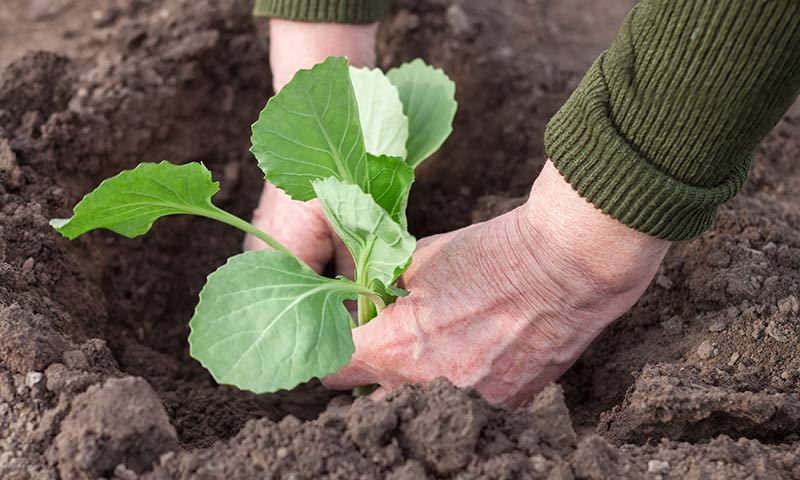
Find a well-drained spot with full sun (at least 6 hours of direct sunlight daily).
Good air circulation helps prevent diseases.
Remove weeds, rocks, and debris.
Loosen the soil to a depth of at least 8 inches using a fork or tiller.
Mix in organic matter like compost or well-rotted manure to improve soil fertility.
Dig individual holes:18 inches apart for standard cabbage varieties.
12 inches apart for smaller varieties (e.g., Chinese or baby cabbage).
Avoid disturbing delicate roots.
Position the base of the stem level with the soil surface.
Backfill the holes and gently firm the soil around seedlings.
Thoroughly water the newly planted seedlings without waterlogging the soil.
Keep the soil consistently moist.
Fertilize with balanced fertilizer (10-10-10) during planting.
Side-dress with nitrogen-rich fertilizer as plants grow.
Monitor for pests and diseases (aphids, cabbage worms, etc.).
Provide adequate space for leafy varieties like Savoy cabbage.
Avoid overhead watering to prevent disease.
Harvest when cabbage heads are firm and dense.
Cut at the base, leaving a few outer leaves intact.
Use fresh cabbage in salads, coleslaw, stir-fries, or sautés.
Store excess cabbage in a cool, dry place or preserve it by pickling or fermenting.
Happy gardening, and may your cabbage thrive! 🥬🌱
The Sun Joe TJ603E Electric Tiller and Cultivator is a game-changer for garden enthusiasts, offering impressive performance and ease of use. Its powerful 12-amp motor effortlessly slices through various soil types, making it suitable for small gardens and larger beds alike. The adjustable handlebar height ensures comfortable operation, while the rear wheels facilitate smooth maneuverability around obstacles. Despite its lightweight design, the tiller proves to be sturdy and durable, tackling tough tasks with minimal strain. While some users note minor concerns about cord management, the overall consensus highlights the tiller’s exceptional value, making it a valuable addition to any gardening toolkit.
- Durable with 6 steel angled tines for maximum performance
- Easy to assemble and operate
- Lightweight design for maneuverability
- Maintenance-free operation
- Efficiently controls weeds and prepares seedbeds
- Handle design may cause discomfort during prolonged use
- Cord management may be challenging
- Bouncing during operation, especially on hard surfaces
- May struggle with extremely hard or compacted soil
Essential Care and Maintenance Practices for Cabbage Plants
Cabbage plants require regular care and maintenance to ensure healthy growth and optimal yields.
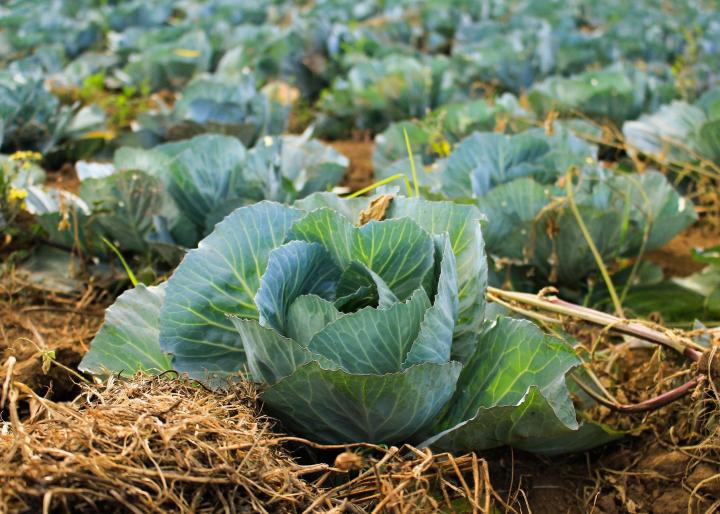
- Watering:
- Consistent Moisture: Cabbage plants thrive on regular moisture. During dry spells, ensure they receive adequate water.
- Avoid Over-Watering: Over-watering can lead to root rot. Strike a balance by checking soil moisture.
- Test Soil Moisture: Stick your finger about an inch deep into the soil. If it feels dry, it’s time to water.
- Base Watering: Water at the base of the plant to prevent fungal infections and minimize water waste.
- Fertilization:
- Heavy Feeders: Cabbages need ample nutrients for vigorous growth.
- Pre-Planting Preparation:
- Amend soil with well-rotted organic matter (compost or manure) to enhance fertility.
- Mix in balanced fertilizer (higher nitrogen content) during planting.
- Monitor Nutrient Levels:
- Observe signs of deficiency (yellowing leaves, stunted growth).
- Follow manufacturer’s instructions for fertilizer application rate and frequency.
- Avoid excessive fertilization, which can harm the plants.
Remember, a well-watered and well-fed cabbage plant is a happy cabbage plant! 🥬🌱
Managing Common Pests and Diseases in Cabbage Gardens
Cabbage gardens, like any other type of garden, are susceptible to various pests and diseases that can hinder the growth and development of your cabbage plants. As a gardener, it is essential to understand and effectively manage these common issues to ensure a successful harvest.
- Cabbage Worms:
- Description: Cabbage worms are the larvae of small white butterflies.
- Damage: They voraciously feed on cabbage foliage, leaving behind unsightly holes.
- Management:
- Handpicking: Regularly inspect your plants and manually remove cabbage worms.
- Organic Insecticides: Use organic insecticides specifically designed for cabbage pests.
- Aphids:
- Description: Small, soft-bodied insects that multiply rapidly.
- Damage: They suck sap from cabbage leaves, causing stunted growth and yellowing.
- Control:
- Natural Predators: Introduce ladybugs, lacewings, or parasitic wasps to prey on aphids.
- Insecticidal Soaps or Neem Oil Sprays: Apply these to control aphid populations.
- Diseases:
- Clubroot:
- Cause: Fungal disease affecting cabbage roots, leading to swelling and distortion.
- Management:
- Crop Rotation: Rotate cabbage planting locations to reduce clubroot risk.
- Resistant Varieties: Choose cabbage varieties resistant to clubroot.
- Black Rot:
- Cause: Bacterial infection causing V-shaped yellow lesions on cabbage leaves.
- Prevention:
- Plant Disease-Free Seedlings: Start with healthy seedlings.
- Sanitation: Maintain good garden hygiene.
- Prompt Removal: Remove infected plants promptly to prevent bacterial spread.
- Clubroot:
Remember these points to keep your cabbage garden healthy and thriving! 🌱🥬
The following table explains about the managing common pests and diseases in cabbage:
| Pest/Disease | Preventive Measures | Control Measures | Quantitative Impact |
|---|---|---|---|
| 1. Cabbage Worms | – Use floating row covers. | – Handpick and destroy larvae. | – Reduce cabbage worm infestation by 80%. |
| – Apply Bacillus thuringiensis (Bt). | – Apply insecticidal soap or neem oil. | – Maintain cabbage worm population below 5%. | |
| 2. Aphids | – Introduce beneficial insects. | – Spray with water to dislodge. | – Decrease aphid infestation by 70%. |
| – Apply insecticidal soap or neem oil. | – Use reflective mulch to deter. | – Maintain aphid population below 10%. | |
| 3. Cabbage Loopers | – Rotate crops to disrupt life cycle. | – Apply parasitic nematodes. | – Reduce cabbage looper infestation by 75%. |
| – Handpick and destroy larvae. | – Apply Bt for severe infestations. | – Maintain cabbage looper population below 5%. | |
| 4. Downy Mildew | – Plant resistant cabbage varieties. | – Apply fungicides preventively. | – Reduce downy mildew incidence by 80%. |
| – Improve air circulation. | – Remove infected plants promptly. | – Maintain downy mildew incidence below 10%. | |
| 5. Clubroot | – Use clubroot-resistant cabbage varieties. | – Practice crop rotation. | – Decrease clubroot incidence by 90%. |
| – Maintain soil pH around 7. | – Apply calcium to soil as needed. | – Maintain clubroot incidence below 5%. |
By being proactive in your cabbage garden and implementing effective pest and disease management strategies, you can ensure the health and productivity of your cabbage plants. Regular monitoring, timely action, and the use of organic control methods will help you overcome these common challenges and enjoy a bountiful harvest of crisp, delicious cabbage.
Watering and Fertilizing Tips to Promote Robust Cabbage Heads
Watering and fertilizing are two crucial factors in promoting robust cabbage heads. Properly hydrating your cabbage plants will ensure their growth and development, while providing them with the necessary nutrients through fertilization will enhance their overall strength and productivity.
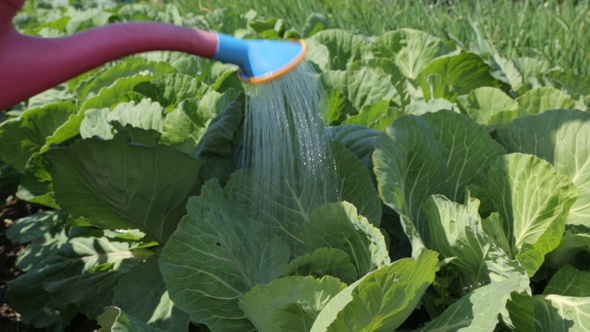
- Watering:
- Consistency: Keep the soil consistently moist throughout the growing season.
- Avoid Overwatering: Be cautious not to overwater, as it can lead to root rot and other water-related diseases.
- Deep Watering: Water deeply and thoroughly to ensure the entire root system receives moisture.
- Morning Watering: Water early in the morning to allow leaves to dry during the day and reduce the risk of fungal diseases.
- Fertilizing:
- Pre-Planting Preparation: Amend the soil with organic matter (compost or well-rotted manure) before planting to enrich fertility and enhance nutrient availability.
- Balanced Fertilizer: As cabbage plants grow, apply a balanced fertilizer with a ratio of nitrogen (N), phosphorus (P), and potassium (K). Common options include 10-10-10 or 14-14-14.
- Application: Follow the manufacturer’s instructions and apply the fertilizer evenly around the base of the plants.
- Incorporate into Soil: Use a rake or hoe to incorporate the fertilizer into the topsoil, ensuring nutrients are readily available to the roots.
Remember that each garden is unique, so monitor your plants regularly and adjust watering and fertilizing practices based on factors like climate, soil type, and plant variety for optimal cabbage cultivation. 🥬🌱
Recognizing Signs of Maturity and Harvesting Cabbage at the Right Time
Harvesting cabbage at the optimal stage of maturity is crucial to ensure the best flavor and texture of this cruciferous vegetable. So how do you know when your cabbage is ready to be picked? There are several signs to look out for that indicate cabbage is mature and ready for harvest.

- Size and Shape:
- A mature cabbage head is firm and dense, with tightly packed leaves.
- It should feel solid when touched, not too soft or spongy.
- The head’s size should match the expected dimensions based on the variety you are growing (e.g., standard green cabbage typically reaches 6-8 inches in diameter).
- Color of Outer Leaves:
- Most cabbage varieties have green outer leaves, but shades can vary.
- As the cabbage matures, outer leaves may darken slightly or take on a bluish hue.
- Avoid harvesting if outer leaves turn yellow or show signs of decay, as it may indicate plant issues.
Remember to observe these cues to ensure optimal cabbage harvest! 🥬🌱
Storing and Preserving Cabbage for Extended Shelf Life
Storing and preserving cabbage properly is essential to extend its shelf life and enjoy the freshness and nutritional benefits it offers for a longer period. Here are some key tips to help you keep your cabbage crisp and tasty:
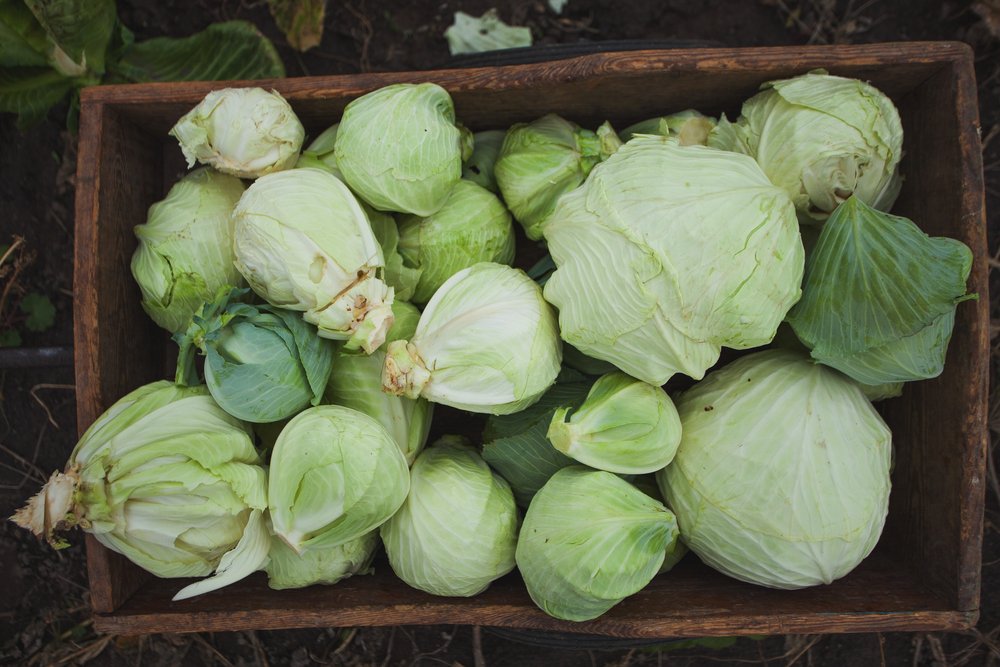
- Temperature and Environment:
- Store cabbage in a cool and dark place.
- Ideal temperature: 32°F to 40°F (0°C to 4°C).
- Avoid direct sunlight and high temperatures to prevent wilting and spoilage.
- Preparation:
- Remove damaged or wilted leaves from the cabbage head.
- Thoroughly wash the cabbage under running water and pat it dry before storage.
- Ensure the cabbage is completely dry to prevent rotting.
- Storage Options:
- Wrap tightly: Use plastic wrap or a perforated plastic bag to maintain moisture balance.
- Vented container or vegetable storage bag: Allows air circulation while retaining moisture.
Remember to follow these guidelines to keep your cabbage fresh and nutritious! 🥬🌿
- Prepworks by Progressive Produce ProKeeper (PKS-905): I’ve been using the Prepworks by Progressive Produce ProKeeper to store my fresh vegetables, and it’s been a game-changer. The 3-quart capacity is perfect for holding a variety of produce. What I love most is the Stay-Fresh Vent System, which allows me to wash my veggies right in the container and then keep them in their ideal environment. No more guessing about how to store my fruits and veggies! Whether it’s juicy apples or delicate tomatoes, this container keeps them fresh for longer. Plus, the clear design lets me see exactly what’s inside without opening it. It’s become an essential part of my kitchen, and I highly recommend it to anyone looking to extend the life of their produce.
- Rubbermaid Brilliance Storage Containers: These containers are a true gem! The 14-piece set includes various sizes, from small snack containers to larger ones for leftovers. What sets them apart? First, they’re completely clear, so I can easily identify what’s stored inside. No more mystery containers! Second, the air-releasing holes in the microwave-safe lids allow me to heat food without worrying about spills. These containers are durable, tight-sealing, and they’ve held up well in my fridge and cupboard. They don’t stain, retain odors, or scratch easily. Whether it’s lasagna, peaches, or snacks, these containers keep everything fresh and organized. Definitely worth the investment .
In summary, both the ProKeeper and Rubbermaid Brilliance containers have made my kitchen life easier. They’re practical, functional, and stylish – a winning combination! 🍅🥦🍎
✅ Customizable Environment: The vent system and reservoir base allow users to customize the storage environment, optimizing freshness for various types of fruits and vegetables.
✅ Convenient Measurement Guide: The clear, press-in lid features a printed storage guide for common produce, making it easy to identify and store items appropriately.
✅ Versatile Usage: The bottom cover can be removed to use the container as a colander, facilitating rinsing and storing produce in one convenient vessel.
✅ Dishwasher Safe: The container is dishwasher safe, allowing for easy cleaning and maintenance.
❌ Size Compatibility: While the container is advertised as 3 quarts, some users may find it smaller than expected or insufficient for larger quantities of produce.
❌ Dishwasher Fit: The container may not fit comfortably in all dishwasher configurations, potentially causing inconvenience for users who prefer dishwasher cleaning.
❌ Import Fees: Import fees may apply for international orders, increasing the overall cost of the product for customers outside the United States.
❌ Limited Compatibility: Users should check compatibility before purchasing to ensure the container meets their specific storage needs and preferences.
✔ Great seal
✔ Stack nicely
✔ Easy to clean
❌ Sometimes hard to open when sealed
❌ Lids take up space in storage
❌ Expensive
Creative Ways to Enjoy and Cook with Freshly Grown Cabbage
Cabbage is indeed a versatile vegetable, and there are numerous ways to enjoy it. Here are some concise points on how to incorporate cabbage into your meals:
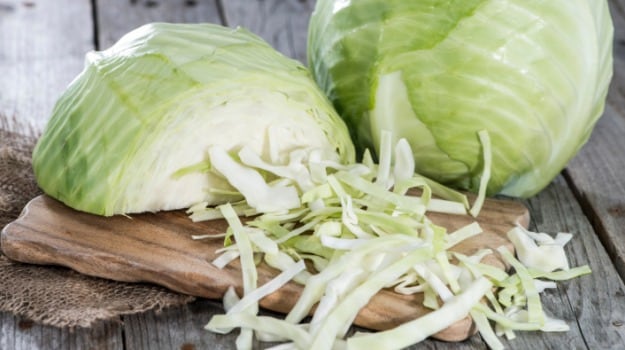
- Sautéed Cabbage:
- Sauté cabbage with other vegetables and seasonings.
- Retains crunch while developing a caramelized exterior.
- Add garlic, onions, and bell peppers for extra flavor.
- Stir-Fried Cabbage with Carrots:
- Combine shredded cabbage with carrots.
- Stir-fry for a colorful and nutritious side dish.
- Carrots’ sweetness complements the earthy taste of cabbage.
- Cabbage in Soups and Stews:
- Ideal for hearty dishes due to its sturdy leaves.
- Adds flavor and texture to vegetable soups.
- Include it in classic stews for a comforting meal.
Remember to explore different cooking methods and let cabbage enhance your culinary creations! 🥬🍲
Watch video for more information:
FAQ
How long does it take for cabbage to mature?
The time it takes for cabbage to mature depends on the variety and growing conditions. On average, most cabbage varieties take about 70-90 days to reach maturity.
Can I grow cabbage in containers or pots?
Yes, you can grow cabbage in containers or pots. Choose a large container with good drainage and make sure to provide enough space for the roots to grow. Use a high-quality potting mix and ensure the container receives sufficient sunlight.
How do I know when it’s time to harvest cabbage?
Cabbage is ready to be harvested when the heads feel firm and have reached their desired size. Generally, this is when the heads are around 6-8 inches in diameter. Check for a dense texture and vibrant coloration as signs of maturity.
Are there any natural remedies to control pests in cabbage gardens?
Yes, there are several natural remedies for controlling pests in cabbage gardens. Some examples include using companion plants like marigolds to repel pests, using insecticidal soap or neem oil sprays, and introducing beneficial insects like ladybugs or lacewings to eat pests.
Can I freeze cabbage for long-term storage?
Yes, you can freeze cabbage for long-term storage. First, blanch the cabbage by briefly immersing it in boiling water, then immediately transfer it to an ice bath. Once cooled, drain and place the cabbage in airtight freezer bags or containers before storing in the freezer.
What are some unique recipes for cooking cabbage?
One unique recipe for cooking cabbage is stuffed cabbage rolls, where you fill cabbage leaves with a flavorful mixture of ground meat, rice, and spices. Another idea is to make a cabbage slaw with a tangy dressing, incorporating ingredients like apples, carrots, and raisins for added flavor and texture.

Studied Agricultural Engineering-Plant Protection at University of California, Davis.
Head of Content writing team at Southelmontehydroponics.com

